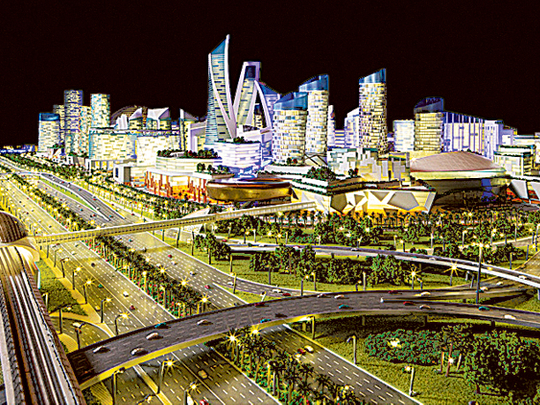
Dubai: Small may need to get off the agenda for Dubai’s mall developers ... and even its retailers. Ever since the gargantuan-scaled Mall of the World was announced, anyone related to the retail sector here are only thinking in epic proportions. Taking on anything lower in scale now would not be for the faint-of-heart developer.
“Regional malls tend to get scared when a super-regional mall opens up in their vicinity, but even a super-regional mall would fear the arrival of a mega-development such as Mall of the World,” said Jayant Ganwani, CEO of Lals Group and developer-owner of the city’s neighbourhood malls, Lamcy Plaza and Arabian Centre. “There’s no way anyone can overlook a development that’s going to be 8 million square feet — it will be the showstopper to take on all others.
“Today, if a developer wants to come in with a neighbourhood or a smaller sized mall, he had better cover all the angles if he wants a sustained presence. It would be a difficult enterprise to pull off even in the best of times.”
Retailers too have many conundrums to deal with. It is unlikely they have ever been in a situation where two of the world’s largest malls are within the same city. Not just that, more than 20 million square feet of new retail stock is coming solely through new malls; apart from Mall of the World (which will be built by Dubai Holding), there are four projects from Nakheel, including the 6.7 million square feet one on Deira Islands, according to forecasts from Cluttons, the consultancy.
But Ganwani sees all the new capacities coming in handy for all stakeholders over the longer stretch. “As bigger malls open, the pricing and rental will come to an equilibrium where everyone can — and will — make a decent amount at the end of the day.”
As is the case with everything in life, scale is about how one perceives it. One of the bigger existing malls in Dubai could suddenly seem diminutive when a much larger one opens in its vicinity. And in an urban landscape such as the one in Dubai, most of the malls do seem packed into a tight grid and which makes it easier for comparisons. “Past experience has shown that consumers tend to go for the latest and the most excitingly new,” said Ajai Dayal, who heads Tridayle Consulting, a retail consultancy. “So, it can be assumed that when Mall of the World comes on, the existing ‘superstars’ will have to work doubly hard to hold on to their footfall numbers.”
Can they succeed? Recent experience shows that older malls do need to engage in near constant reinvention exercises to stay relevant to the consumer ... and by extension to its tenants. The moment a prospective decides to skip a trip to one of the older malls in favour of the new is fraught with risk for the existing players., because a shopper thus lost is unlikely to make a return (or even if he or she did, it won’t be at the same frequency as in the past).
“We will always have huge developments pulling in traffic from everyone else and into their doors,” said Dayal. “[Existing] malls have to redraw the definition of their catchment areas to much more limited levels.
“Retailers here are extremely savvy and many are following a clearly segmented approach. Brands that need large footfall or tourist-driven traffic are still lining up for locations in the two or three major developments. Major retailers will, without a doubt, already be eyeing the new mega properties and planning their entry strategies.
“That is the time when the quality of management will decide who succeeds.”











